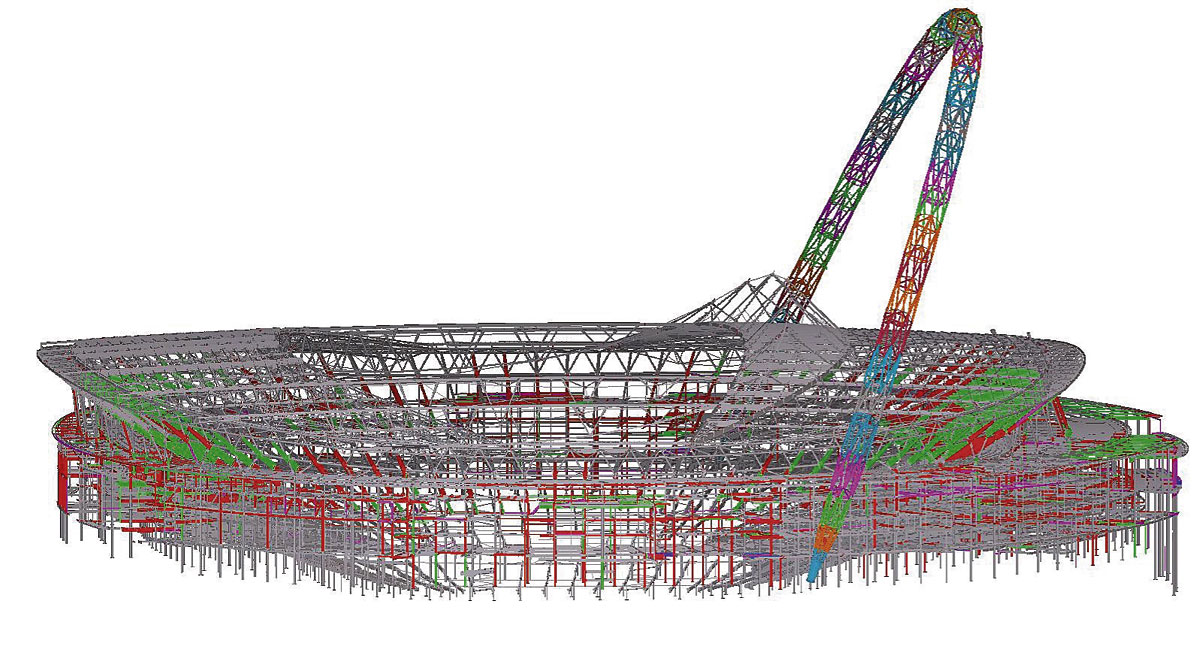Projects and Features
Competitive gap crushes concrete
Steel frames remain the fastest and most cost effective framing solution for both commercial offices and residential apartments according to the latest Cost Comparison Survey, reports Nick Barrett.
Steel specifiers can have a hearty chuckle at recent concrete centre attempts to suggest that concrete can compete against steel as a choice of framing solution on either cost or programme. The latest in a 13 year series of Cost Comparison studies, and the 23 year series of market share surveys, commissioned by Corus, confirms that steel is still the preferred choice for framing for very good reasons, not the least of which is cost. ‘The buildings selected for analysis in this study are typical of those actually built in the real world, which is perhaps not the case with recent copycat surveys,’ says Corus General Manager Alan Todd.
The Cost Comparison survey is commissioned each year by Corus and is independently produced by a team including Arup, Mace, Davis Langdon and the Steel Construction Institute. It compares the relative costs of constructing two commercial buildings in steel and concrete, and also the relative costs for residential apartments. The conclusions reached also hold for hospitals, education and retail buildings.
The buildings designed and costed for the survey are a four storey, speculative office building in Manchester, an eight storey London head office building and an eight storey residential building in the London suburbs which includes two storeys of below ground parking and a retail ground floor.
Since the previous survey in 2005 the cost of frame and floors for the two office buildings has risen by an average of 6% for steel and 5% for concrete. Whole building costs are up on average 5% for steel and 4% for concrete. However, in absolute terms steel is still on average £33 per square metre cheaper for frame and floors than concrete and for the whole building steel is 4% cheaper, or £55 per square metre. Not surprisingly, steel also remains the fastest construction method.
For the residential building steel sheet piling provides a basement 4% cheaper than concrete, with a 7% cost advantage on frame and floors. The overall building is 3% cheaper in steel than in concrete, even before the advantages of faster construction is factored in.
Mr Todd said: ’We can all take comfort from the fact that the survey confirms what the market already knows, that steel is well ahead of concrete even when we look only at costs. After speed is factored in, which translates into less time on site, higher quality, a safer working environment and an overall more sustainable approach to construction, steel is winning hands down, Steel also delivers predictability of project completion which is increasingly the key for many developers.’
Department of Trade and Industry cost indices confirm the results of the study and show steel solutions to be more competitive than ten years ago; in 2006 steel sections are still around the same price they were in 1995, in real terms. Concrete on the other hand is typically 20% more expensive in real terms today than ten years ago.
Mr Todd concluded: ‘The importance of the survey is simply that it confirms what we already know, which is that thanks to the efforts of the entire UK constructional steelwork supply chain over the past 25 years we have a superb product, which continues to offer best overall value.’












